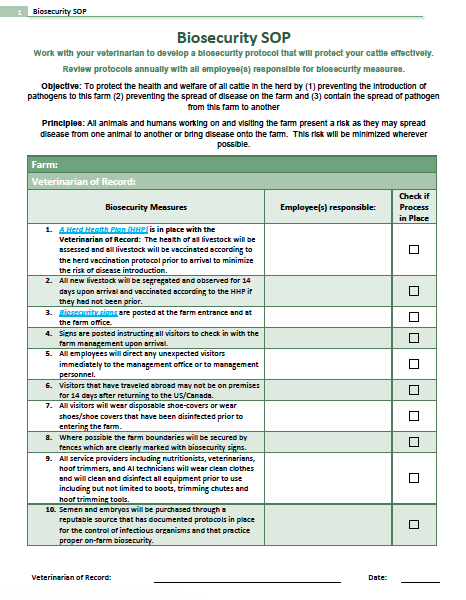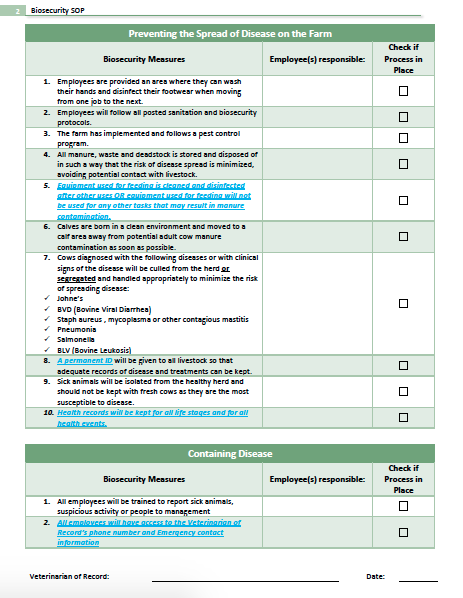Biosecurity
Written protocols should be in place and reviewed annually with your veterinarian and employees to ensure that certain procedures are carried out appropriately.
Goals:
To prevent the introduction/spread of pathogens and disease on and from this farm.
How to assess:
Review the biosecurity protocol to confirm that the following information is included and that appropriate criteria are being met:
Dairy Well
- Herd health plan (vaccine schedule, parasite prevention, hoof health, udder health, sick cow monitoring) must be in place with the Veterinarian of Record (VOR)
- Biosecurity signs must be prominently displayed
- Feeding equipment must be disinfected after other uses or only used for feeding to prevent cross-contamination
- All livestock must have permanent IDs
- Health records must be kept for all ages and health events
- The VOR and emergency contact information must be easily accessible
- SOP must be signed by the VOR
National Dairy FARM Program
- A herd health plan written in consultation with the veterinarian of record (VOR)
- All cattle must have permanent IDs
- Adequate ventilation is in place to reduce odors, dust, and/or noxious gases
- Permanent, easily accessible drug treatment records that denote how all drugs were used and disposed
- All withdrawal times for milk and meat are followed
Validus
- Drug treatment records must be current and accessible to employees
- All cattle must have permanent IDs
- Cross-contamination must be minimized (from feed to manure, manure to feed); use of different equipment recommended
- Signs should be posted throughout the facility to control visitor entry
- Needle tracking:
- Appropriate use and disposal
- Protocol for actions if needle breaks off into animal
There is no practice protocol for biosecurity.






